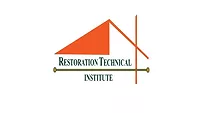Leadership in a Consolidating Market: Considerations for Restoration Pros

Photo credit: Worawut Prasuwan / iStock / Getty Images Plus via Getty Images
There are thousands of books and articles published every year about leadership and management. Before we dive into considerations for leadership in the consolidating market of the disaster restoration industry, we must first define, in simple terms, management and leadership.
Peter Drucker, the renowned American author and consultant in the field of organizational development and management, defines management and leadership in this way:
“Management is a multi-purpose organ that manages business and manages managers and manages workers and work.”
“Leadership is the lifting of a man’s vision to higher sights, the raising of a man’s performance to a higher standard, the building of a man’s personality beyond its normal limitations.”
Keep these two definitions in mind as we look at the consolidation dynamics occurring in the property restoration industry.
Writing for the Harvard Business Review December issue of 2002, Graeme K. Deans, Fritz Kroeger and Stefan Zeisel concluded that once an industry forms or is deregulated, it will move through four stages of consolidation. Their research suggests every company in every industry will go through these four stages or disappear.
Stage 1: Opening. The first stage begins with a single startup or with a monopoly just emerging. But this 100% industry concentration quickly drops off. Soon, the combined market share of the three largest companies drops to between 30% and 10%, as competitors quickly rise to create the frontier of industry consolidation.
-
Stage 2: Scale. This stage is about building scale. Major players begin to emerge, buying up competitors and forming empires. The top three players in a stage-two industry will own 15% to 45% of their market, as the industry consolidates rapidly.
Because of the substantial number of acquisitions occurring in this stage, companies must hone their merger-integration skills. These include learning how to carefully protect their core culture as they absorb new companies and focusing on retaining the best employees of the acquired companies. Building a scalable IT platform is also crucial to the rapid integration of acquired firms. Companies jockeying to reach stage three must be among the first players in the industry to capture their major competitors in the most important markets.
Stage 3: Focus. After the ferocious consolidation of stage two, stage-three companies focus on expanding their core business and continuing to aggressively outgrow the competition. The top three industry players will now control between 35% and 70% of the market. By this time, there are still generally five to 12 major players.
Stage 4: Balance and alliance. Here, the titans of industry reign. The industry concentration rate plateaus and even dips as the top three companies claim as much as 70% to 90% of the market. Companies do not move through stage four; they stay in it. Thus, firms in these industries must defend their leading positions. They must find new ways to grow their core business in a mature industry and create a new wave of growth by spinning off new businesses into industries in initial stages of consolidation. They must also be alert to the potential for industry regulation and the danger of becoming complacent by their own dominance.
Presently, the restoration industry is moving rapidly through stage two and into stage three of the industry consolidation dynamic. Private equity (PE) firms are primarily driving this consolidation.
The current economic environment has seen record levels of money invested with PE firms. The firms with the deepest pockets will dominate the industry as partners at PE firms raise funds and manage these monies to yield favorable returns for shareholders. The typical investment timeline is between four and seven years. They look for businesses that show clear growth potential in sales and profits over the next few years, then sell their share with the greatest capital gain possible.
Private equity firms look for companies that:
- Have a good management team. The quality of a manager is a decisive factor for PE firms if they will not be involved in the day-to-day running of the company.
- Are in a market segment with growth potential. This is important because PE firms need high rates of growth. Another objective of PE is to get a bigger market share. It is important that the company is positioned to grow within its sector.
- Have an ambitious but realistic business plan. A poor business plan with meager growth is of no interest to PE firms.
Private equity firms look for an annual profit of between 20% and 25%. They estimate that one in every five will be a failure, so those that make a profit should compensate for the losses of those that fail.
While these drivers are not unique to the property restoration industry, the property restoration industry is unique from the broader independent business landscape. Management teams within the PE firms have an industry learning curve to overcome as they learn the complexities of this industry.
Additionally, the independent restoration contractor is fiercely independent. These professionals competed head-to-head with national franchises and carved out their place in the market. They have differentiated themselves through better training and skills, better pay and benefits, and empowering staff to make decisions and solve problems, creating a boutique experience for their customers.
These entrepreneurs have been the kings and queens of their domain and have seen much success. Each has their own leadership style, but through the transition process, they may find that their style no longer fits the new entity. As the PE firms acquire dots on the map, each one of those dots becomes subservient to the new king. The former leader of the acquired company now must share the decision-making process and make personal adjustment to reflect the culture, vision and mission of the combined group. The former owner is essentially now the manager.
Through the transition, it is more important than ever that the former owner continue to truly lead their team. They must effectively communicate the vision and opportunity, and convey the enthusiasm to inspire the rest of the company.
Leaders will face new challenges in inspiring, motivating and retaining staff as part of a larger organization. The staff who have felt like a part of the family and loved the flexibility afforded to good employees of small businesses may no longer feel as though their contributions are as important. They may feel betrayed or resentful. Humans in general resist change. As the former owner and decision maker, it may be frustrating to have to defer to others before acting. The leader sets the tone and culture of their group, and must live and project the desired attitudes and behavior expected from each member.
The leader must be observant and recognize the individuals who are informal leaders within their organization. Developing and inspiring these informal leaders to share the same vision must be a priority. Informal leaders who are not on board with the changes and direction of the company will be a cancer within the organization. The leaders must be committed to their own continued personal and professional development, as well as the development of other existing and future leaders in their organization.
Businesses where outside investors are involved do not necessarily reward good leaders. The CEO and the rest of the C-suite are rewarded based on the short-term quarterly results, and each quarter that clock resets. This short-term approach to financial results can undermine a long-term leadership strategy.
These challenges exist at individual locations as well as senior levels of corporate management. Corporate leadership must build cohesiveness and inspiration for these globally dispersed leaders. This is an exciting time with great potential for leaders who are willing to honestly look in the mirror each day and commit to their personal and professional development as a leader afresh; a leader who inspires those around them to see and invest themselves in the bigger potential.
Identifying potential future leaders, mentoring their development, and building a bench of talent for the future is paramount. The degree to which the new consolidated organizations succeed will be determined by the quality and cohesiveness of their leadership at all levels. Successful owners view their business through a potential buyer’s perspective and ensure that the future leaders follow suit.
Looking for a reprint of this article?
From high-res PDFs to custom plaques, order your copy today!








